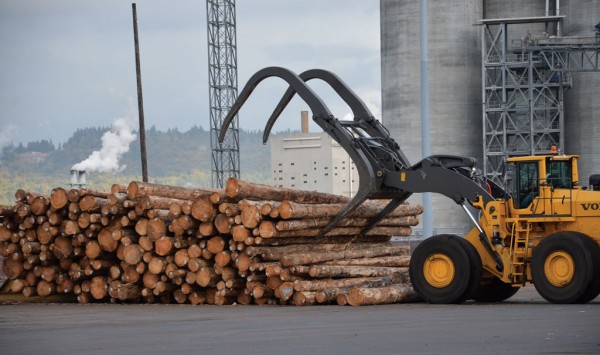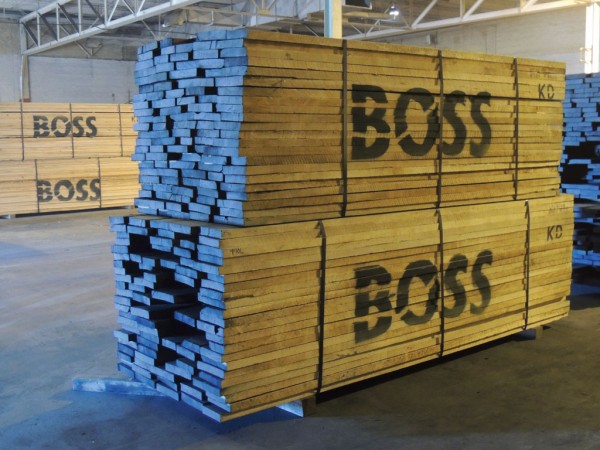The booming housing economy and furniture manufacturing, and even demand for whiskey are all affecting the surge in hardwood exports to North Asia markets. One in three boards coming off the production line is destined for the People’s Republic of China. Companies nationwide are supplying a variety of hardwood species to customers in China, Korea and Japan.
One third of the U.S. is forested area accounting for 751 million acres, which is second only to Russia’s 766 million acres. In 2017, the U.S. value of industry shipments of wood was $95 billion. Asia markets are depending on a sustainable source of temperate hardwood (ash, cherry, maple, oak, walnut) and the U.S. can increase exports because of careful management of its forests. In fact, the U.S. grows more hardwood each year than it harvests for reliable supplies, according to United Kingdom based International Timber. Moreover, the American Hardwood Export Council (AHEC) confirmed to the AJOT that the U.S. surpassed Russia as the top temperate hardwood exporter to China.

Quality hardwoods are grown in rural areas not near shipping hubs and these rural family-owned companies are now quite adept at exporting over the past ten years. The eastern region is heavily forested with hardwood supply from the Appalachian Mountains from North Carolina up through New England as well as in the deep south of Louisiana, Mississippi and Alabama. “At this point, just about every lumber company in business today is exporting in some capacity,” explained Tripp Pryor, International Program Manager, AHEC, based in Virginia to AJOT. Recent exporters are from the Midwest and “North Central” regions of Iowa, Minnesota, Wisconsin and Michigan. Some exporters are in Oregon and Washington in the Pacific Northwest, but are primarily softwood (logs) companies with hardwood divisions to buy hardwoods from the East Coast region for foreign customers and export smaller volumes of local species like western red alder. “Most of our members utilize inland freight as well as international shipping. I’ve even heard from some of them that shipping to China has become cheaper than inland freight to U.S. ports,” exclaimed Pryor.
AHEC finds the growth of the Chinese market is unlike anything ever encountered in this industry. They estimate that 60% of all hardwood lumber produced is exported and of that 54% ends up in China. They opened offices in Shanghai and Hong Kong in 1992 when U.S. hardwood exports to Hong Kong were $7 million and $1 million to China per year. In 2017, hardwood lumber exports to China alone jumped to over $1.5 billion. The surge was after the financial crisis when in 2009 the U.S. exported $209 million of hardwood lumber to China, then $507 million in 2011 and going over one billion dollars in 2014 exported to China. The compound annual growth rate (CAGR) from 1992-2017 was 34% of total hardwood lumber in dollars exported to China whereas Japan and Korea decreased over that 25-year period by 11.47% and 1.8%, respectively.
Tamalsa, a family owned lumber business since 1903 based in Valencia, Spain saw the importance of the U.S. as a source of green lumber for exports and opened Boss Lumber Corporation in Galax, Virginia in 2006. “We are only shipping green lumber not logs. Green lumber is all species that we buy, but freshly cut from the log by the sawmill. We purchase the square edge lumber which needs drying and processing before we can ship it. It may take from 2-18 months drying depending on the species or thickness,” said Jose Miguel Jimenez, President, Boss Lumber in a recent interview with AJOT. The main species exported are white and red oak, walnut and ash. The main customers’ shipping requirement is that every bundle be strapped with runners (dunnage) because of the difficulty unloading at destinations lacking space. Although this requirement is for the European Union (EU) not China because the former is looking for higher grades of hardwood lumber. The EU customers also require additional documents to ensure lumber is free of insects.
Shipping Loads
The shipping process is by a trucking company picking up the empty container at the Norfolk port and Boss loads the container at their facility in Galax, Virginia and then is delivered to the port without special equipment involved. Jimenez explained that they are impacted by the nationwide shortage of trucks and drivers caused by the strengthening U.S. economy and the new federal safety regulations for drivers in effect December 2017. “We have been shipping with two trucking companies for over five years. However, we are noticing a lack of trucks and drivers and are having to find other trucks at a higher rate, if we need to ship the loads, promptly,” he said.
Boss does business with TMX and Casey Overseas freight forwarders and ocean carriers for containers are COSCO and Evergreen. In addition, Boss provides customers with a proprietary software for visibility and notification of green lumber container shipments from loading of the truck to vessel sailing with approximate ETA, then posting shipping line documents on-line for customers to view.

Boss Lumber is also selling hardwood lumber to Korea importers (Incheon) that sell to small end users in several of the seven Korean Free Economic Zones. For example, the Busan-Jinhae Free Economic Zone is located in southeast Korea near Busan port. In 2013, Nice Korea, a construction material (timber) producer of the global Suteki Nice Group based in Japan, established in the Busan New Port Logistics Complex. The pre-cut timber processing plant produces construction materials and wooden houses for the Korea and Japan markets with plans to export products to Taiwan, Indonesia and China.
The demand from China and to a lesser extent Japan is based on their domestic consumption since 2008 and 2012, respectively. China is the world’s largest producer and exporter of furniture. “Interestingly, China only exports about 20 percent of what it produces in furniture, the rest is for the domestic markets and before 2008 they exported 80 percent,” said Pryor. American red oak is a major species in demand by Chinese buyers and manufacturers accounting for 78% of all red oak exports by value from the U.S.A. White oak “staves” and logs to produce staves are exported to Japan for whiskey to make the barrels in Japan. The demand is so high that Japanese companies are securing supply chains in the United States such as Suntory buying Jim Beam and Maker’s Mark in 2014 for supply to Yamazaki and Hibiki high-end whiskey, explained Pryor.
From coast to coast, exports to the three main North Asia markets for lumber and logs is reflected in 2017 calendar year statistics from Port of Norfolk, Virginia Port Authority and Port of Longview, Washington, respectively. Lumber exported from Norfolk was a total of 75, 521 TEU and short tons of 914, 800. Port of Longview exported Douglas Fir and White woods logs of Conifer trees of 352,000 metric tons (MT) of logs to China, 184,000 MT of logs to Japan and 93,000 MT to Korea.
according to Joseph D. Harris and Brooke Hendrickson spokespersons in both ports, respectively.




